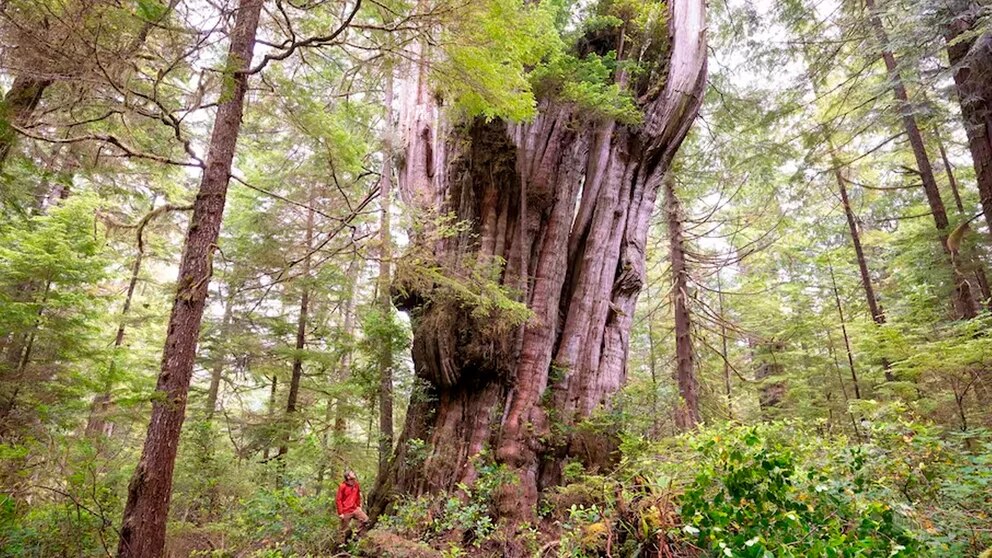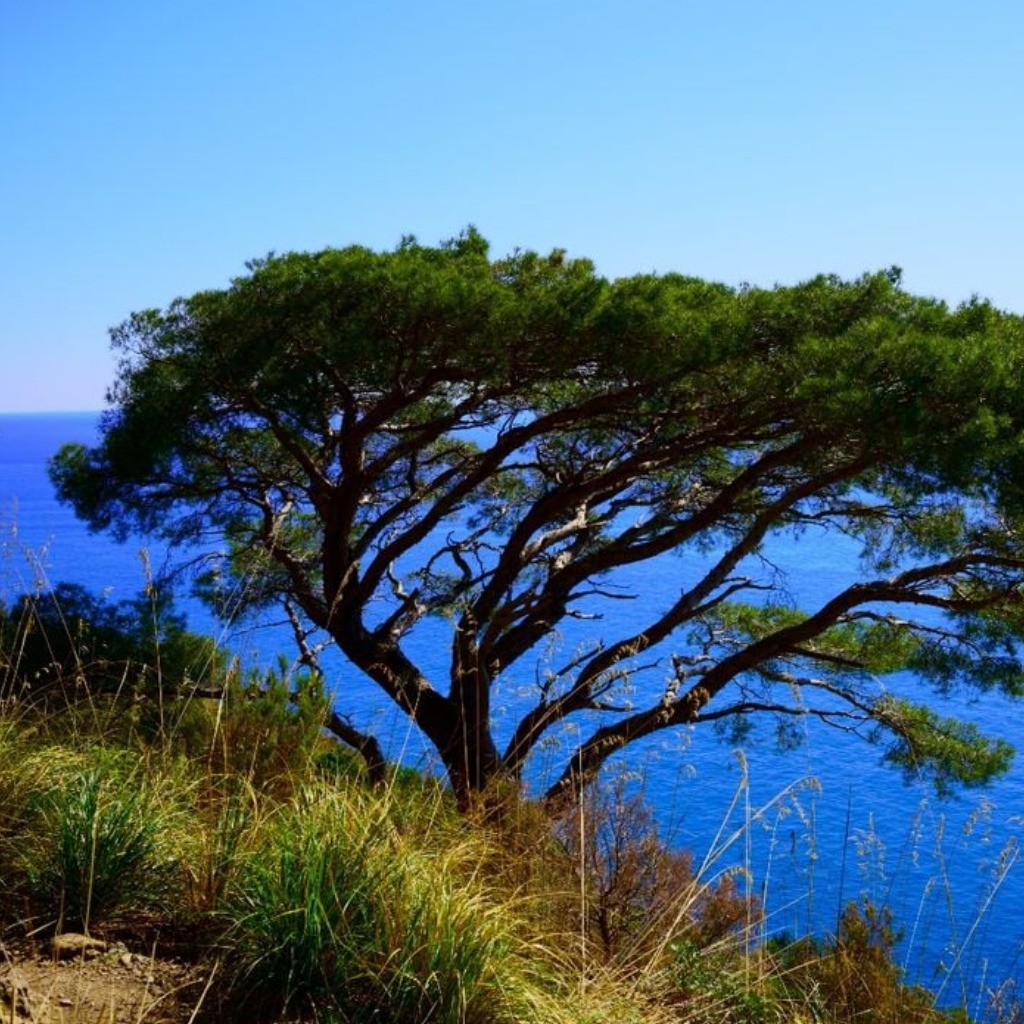
A phenomenon of nature”: a Canadian explorer discovers a colossal thousand-year-old tree
Nicknamed “The Wall,” the giant was discovered by TJ Watt and is located on Flores Island, in the ancestral territory of the Ahousaht people. TJ Watt, an explorer dedicated to locating and conserving ancient trees, has discovered one of the oldest ever documented in the Canadian province of British Columbia; The enormous red cedar, which appears to widen the higher it grows, measures 46 meters high and 5 meters wide and is believed to be more than a thousand years old.
Located on Ahousaht First Nation territory on Flores Island off the west coast of Vancouver Island, this impressive tree was discovered by Watt last summer. This discovery is especially important because the Ahousaht people, who have inhabited the territory for thousands of years, have committed to protecting this giant as part of their plans to conserve more than 80% of their lands as Cultural and Natural Areas.
Man has dedicated half of his life to the exploration of forests, in search of pristine and gigantic trees hundreds of years old that have not been photographed or documented before, with the aim of drawing attention to the importance of saving these wonders. natural from logging.
The expert discovered this monumental red cedar in June 2022, but did not reveal his discovery until late July of that year, as he wanted to ensure that the tree was properly documented, and also sought input from members of the First Nation of Ahousaht, who have lived in the territory for thousands of years.
“After walking in the forest for a while, we started seeing some really big cedar trees and suddenly, up ahead, we could see the trunk of this giant tree. It was so big that at first we almost thought we were looking at two trees,” he told The Washington Post (WP).
“I nicknamed it ‘The Wall’ because it can only be explained as a wooden wall. “I would describe it as a freak of nature because it actually gets wider as it grows,” added Watt, who said he was honored to have found such a wonderful specimen.
According to Tyson Atleo, a representative of the Ahousaht First Nation, he barely knew about the existence of this colossal cedar tree until Watt took him to see it. “The tree leaves you with a sense of wonder about the natural world and the universe. There is so much about that tree and the life it supports that we will never understand. When you look at it, it hits you that way,” he told WP.
The largest tree in Canada, recognized as the Cheewhat Giant, was first documented in 1988, measuring about 5.8 meters in diameter and 55.5 meters high. It is located in the Pacific Rim National Park Reserve, which is protected, yet about 80% of the original productive ancient forests on Vancouver Island have been logged, satellite photos from the Ancient Forest Alliance show.
Ancient forests are of vital importance, as they house and provide refuge for wildlife and capture enormous amounts of carbon; They are described as containing trees that have developed over hundreds of years, with unique characteristics not found in younger forests.

IT MAY INTEREST YOU
 Rural women | Santa Fe will host the 1st International Forum for Gender and Rurality and the 3rd edition of the LIA Encalada Awards
Rural women | Santa Fe will host the 1st International Forum for Gender and Rurality and the 3rd edition of the LIA Encalada Awards
Next Saturday, October 26, rural women from all over the country will meet within the frame The field and promoting rural development. It is organized by the Civil Association Women of Argentine Rurality.
 More than 20 % of land plant species are found only on islands, and the time is over to save them
More than 20 % of land plant species are found only on islands, and the time is over to save them
A new study maps the species that exist in the world and warn about the risk that inhabit those that inhabit exclusively in island territories.
 Misiones | CONICET Northeast summons companies to participate in the Forest-Industrial Technological Meeting 2024
Misiones | CONICET Northeast summons companies to participate in the Forest-Industrial Technological Meeting 2024
On November 28, the city of Posadas will be the scenario of the Forest-Industrial Technological Meeting 2024 for companies in the region, an event organized by CONICET Northeast that aims to strengthen the relationship between science and companies in the sector of production and wood industry. The day will take place from 9 a.m. to 1 p.m. at the Earth Auditorium without evil, in the Secretariat of Climate Change State.





















